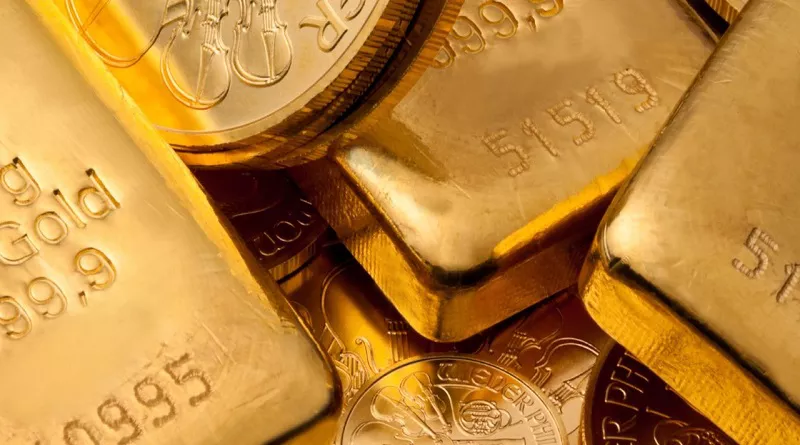Gold has long been a symbol of wealth and stability, and its price has fluctuated significantly throughout history, influenced by economic, political, and social factors. Understanding the price of gold in 1920 provides insight into the economic landscape of the early 20th century and sheds light on how global events shaped the value of this precious metal. This article explores the price of gold in 1920, the factors that influenced it, and the broader historical context.
Gold in the Early 20th Century
In the early 1900s, gold was a critical component of the global financial system, with many countries adhering to the Gold Standard. Under this system, a country’s currency was directly tied to a specific amount of gold, which provided a stable foundation for international trade and investment. As a result, gold prices were relatively stable during this period, with fluctuations often tied to economic crises, wars, or changes in monetary policy.
The Price of Gold in 1920
In 1920, the price of gold was fixed at $20.67 per ounce in the United States. This price was set by the U.S. government under the Gold Standard, and it remained constant for several decades until 1933, when President Franklin D. Roosevelt took the country off the Gold Standard during the Great Depression.
This price stability in the U.S. was mirrored in many other countries that also adhered to the Gold Standard. However, while the nominal price of gold was fixed, its purchasing power fluctuated due to changes in inflation, deflation, and the overall economy.
Factors Influencing Gold Prices in 1920
Although the price of gold was technically stable in 1920, several factors affected the demand for and perception of gold:
Post-World War I Economic Uncertainty
World War I, which ended in 1918, had a profound impact on the global economy. Many European countries faced significant economic challenges, including high debt levels, inflation, and disrupted trade. As a result, confidence in national currencies weakened, and people turned to gold as a safe haven for their wealth.
This increased demand for gold, especially in Europe, made it a valuable asset despite its fixed price. However, since the price of gold was set by governments under the Gold Standard, these changes in demand did not immediately impact the nominal price in the United States or other countries using this system.
See Also: The Golden Value: Unraveling the Price of Gold in 1860
Inflation and Deflation
The 1920s were a period of both inflation and deflation in different parts of the world. For example, the U.S. experienced deflation following a brief post-war inflationary period. This deflation meant that, even though the price of gold was stable, its purchasing power increased because prices for goods and services were falling.
In contrast, some European countries, like Germany, experienced hyperinflation in the early 1920s due to the massive debt incurred during the war and the reparations imposed by the Treaty of Versailles. In these countries, gold became an even more critical store of value as the local currency rapidly lost its worth.
The Gold Standard
The Gold Standard was the backbone of the international monetary system in 1920, ensuring that the price of gold remained relatively stable in countries that adhered to it. The system allowed for fixed exchange rates between currencies based on their gold reserves, which facilitated international trade and investment.
However, the economic instability caused by World War I began to put pressure on the Gold Standard, particularly in Europe. Some countries started to suspend or abandon the Gold Standard in the 1920s, leading to increased volatility in gold prices in those regions. The United States, however, maintained its commitment to the Gold Standard, keeping the price of gold at $20.67 per ounce.
The End of the Gold Standard and Changes in Gold Prices
The fixed price of gold at $20.67 per ounce remained in place until 1933 when the United States abandoned the Gold Standard under the leadership of President Roosevelt. This decision was made in response to the economic challenges of the Great Depression, which required more flexible monetary policies to stimulate the economy.
After the abandonment of the Gold Standard, the U.S. government revalued gold to $35 per ounce, effectively increasing its price to devalue the dollar and stimulate inflation. This move was designed to boost exports and reduce the real burden of debt.
The Legacy of Gold Prices in 1920
The price of gold in 1920 reflects a period of relative stability in the value of gold, thanks to the Gold Standard. However, the economic and political uncertainties of the post-World War I era meant that the demand for gold as a store of value remained strong.
The fixed price of $20.67 per ounce provides a fascinating snapshot of the early 20th-century global economy, highlighting the importance of gold as a stable and reliable asset in times of economic upheaval.
Though the price of gold was fixed, its significance as a store of value and hedge against inflation remained as crucial in 1920 as it is today.
Conclusion: Gold in 1920 and Beyond
The price of gold in 1920, fixed at $20.67 per ounce in the United States, represents an era when the Gold Standard ensured stability in the value of currencies. However, despite this nominal stability, the world economy faced significant challenges, including post-war recovery and inflation, which influenced the demand for gold.
Today, gold continues to play a vital role in global financial markets, often seen as a hedge against inflation, economic instability, and currency devaluation. Understanding its historical price, particularly in key periods like 1920, offers valuable insights into how gold functions as both an investment and a monetary tool across different economic conditions.
You Might Be Interested In
- The Price of Gold in 1880: A Historical Analysis
- The Price of Gold in 1850: A Glimpse Into History’s Golden Era
- The Price of Gold in 1849: A Historical Perspective


